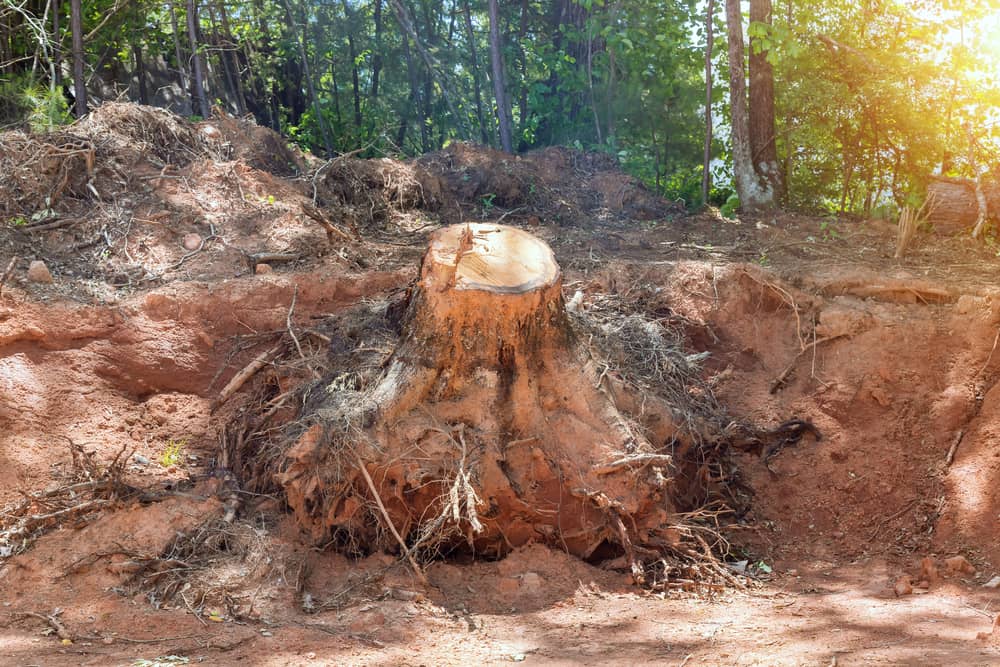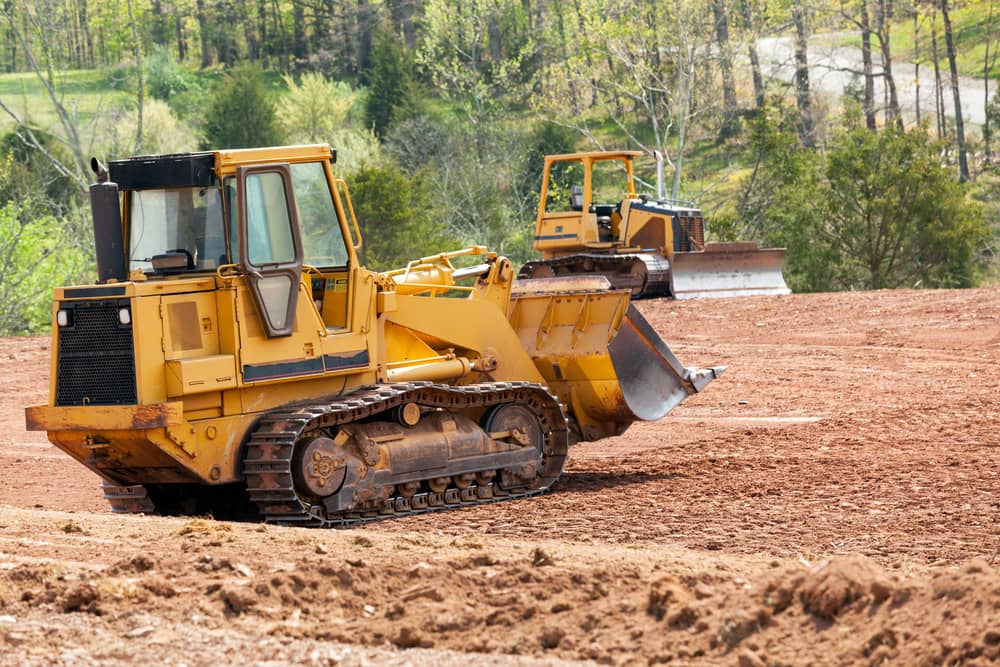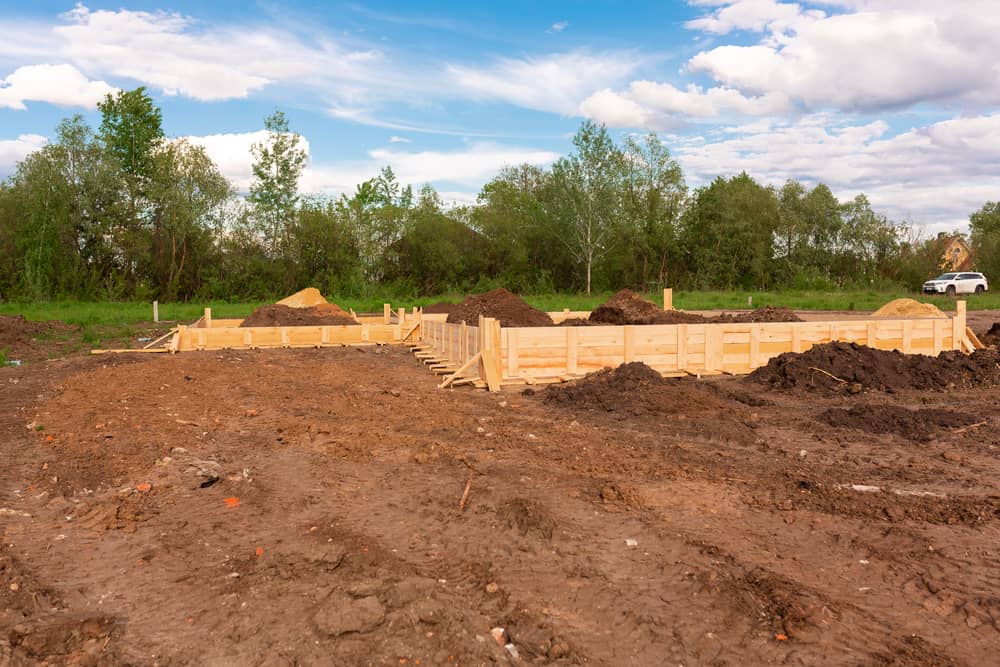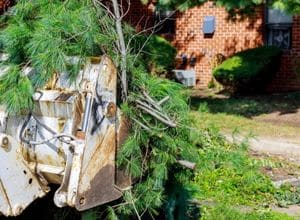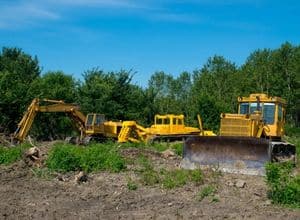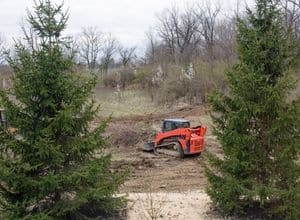Essential Guide to Commercial Land Clearing for Your Development Needs
Clearing the Way: Why Proper Commercial Land Clearing is Essential for Infrastructures in Central Texas
Commercial land clearing stands as the crucial first step in any successful project in Central Texas. The unique landscape of our region presents specific challenges that require specialized knowledge and advanced equipment to overcome effectively. When embarking on construction projects or expanding existing facilities, proper land preparation creates the foundation upon which all property projects depend.
The process of clearing land into a viable commercial property involves much more than simply removing trees. It requires careful planning, adherence to local regulations, and specialized techniques tailored to Central Texas soil conditions and vegetation patterns, including options like forestry mulching for efficient handling of unwanted trees.
Central Texas Commercial Development Challenges
Commercial land in Central Texas often comes with a distinct set of obstacles that can derail your commercial project before it even begins. Our region's characteristic rocky terrain, prevalent mesquite growth, and unpredictable land stability leads to unique challenges for developers unfamiliar with the area.
Land clearing properly requires an understanding of local zoning laws, environmental considerations, and the technical expertise to identify and address site-specific issues. Without proper preparation, construction projects face costly delays, property complications, and long-term maintenance headaches.
When developers attempt to clear trees and vegetation without considering the full scope of site preparation, they often encounter unexpected issues with soil erosion, drainage problems, and infrastructure project complications. These challenges multiply when the commercial property contains fell trees, dense brush, or deeply rooted vegetation in our challenging land conditions.
Agitating the Issue: The Real Costs of Improper Land Clearing
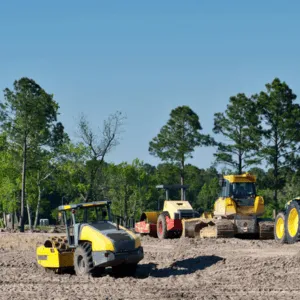
Improper commercial land clearing establishes ongoing problems that can plague your commercial property for years. When stumps, roots, and other debris remain hidden beneath the surface, they continue decomposing, potentially creating sinkholes, unstable foundation conditions, and drainage issues.
Failure to properly identify and relocate utility lines during the process of clearing land can result in catastrophic service disruptions, expensive repairs, and dangerous conditions for workers. Additionally, improper property soil preparation leads to poor drainage, erosion issues, and an inability to support healthy growth in landscaped areas.
The financial and environmental impact of cutting corners during commercial land clearing becomes evident as construction progresses. Projects face unexpected excavation costs, timeline extensions, and permit complications that could have been avoided with proper initial site development.
Environmental responsibility extends beyond mere compliance with local regulations. Improper land clearing methods can damage the surrounding trees and environment, creating problems with neighboring properties and potential buyers who increasingly value sustainable practices.
Professional Commercial Land Clearing Services
Professional commercial property clearing services provide the expertise and specialized equipment necessary to preparing land properly for development. An experienced team understands Central Texas's unique landscape challenges and knows how to address them efficiently.
The process begins with a comprehensive site assessment, identifying specific needs and potential challenges before any equipment touches the ground. This evaluation includes identifying trees, shrubs, and other vegetation for removal, locating utility lines, understanding drainage patterns, and planning for erosion control.
By partnering with experienced professionals who understand local regulations, you ensure compliance with all required permits from the beginning. This proactive approach prevents costly delays and ensures your project remains on schedule through each phase.
What is Commercial Land Clearing?
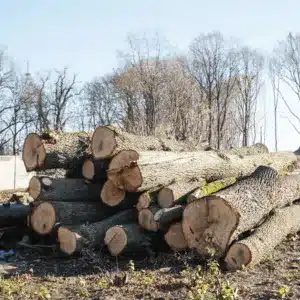
Commercial land clearing involves systematically removing trees, stumps, shrubs, rocks, and other land debris to prepare a site for construction. Unlike residential land clearing, commercial projects typically involve larger areas and require heavy machinery capable of handling more complex challenges.
The process makes a clean slate, transforming overgrown or previously developed land into a safe environment ready for new construction. Professional land clearing services employ various techniques depending on the site's specific conditions and the project's requirements.
Common Land Clearing Methods for Central Texas
Bulldozing ("Pusher Method")
The bulldozing approach offers quick results, clearing land efficiently for large commercial land areas. Heavy equipment pushes vegetation and debris, including trees, into piles for removal, providing a cost-effective solution for sites without significant obstacles.
This method works particularly well on relatively flat terrain with minimal rocks or deeply rooted trees. However, professional operators understand when this approach is appropriate and when more precise work is necessary—especially when building plans require careful attention.
Cut & Grind
The cut and grind method offers thorough vegetation removal while promoting environmental responsibility. Trees and shrubs are cut at land level, and stumps and roots are grinded below the surface.
This technique allows for the beneficial reuse of organic material as mulch, which can later enhance soil health and support future landscaping needs. Grinding stumps completely eliminates the hazard of rotting roots creating sinkholes or other structural issues after development.
Forestry Mulching
Forestry mulching represents one of the most eco-friendly practices in commercial land clearing. This process uses equipment to simultaneously clear and process vegetation into mulch that remains on site.
The approach reduces erosion risk while returning valuable nutrients to the land, supporting healthy growth for future landscaping. Additionally, it eliminates the need for hauling away debris, making it environmentally responsible and cost-effective.
Pulling
The pulling method provides land clearing with minimal soil disruption, making it ideal for sites with specific environmental concerns. Using heavy machinery with specialized attachments, crews remove trees and other vegetation with their root systems intact.
This technique proves valuable when clearing land near sensitive areas or when property owners wish to preserve mature trees. The precise work allows for selective land clearing while maintaining the integrity of the surrounding environment.
Key Benefits of Professional Land Clearing
Enhanced Soil Stability and Growth
Commercial land clearing significantly improves land conditions by clearing invasive or harmful land, including unwelcome trees, that might compete with future land projects. The process aerates and loosens compacted land , creating ideal conditions for new construction and landscaping—especially when using methods like forestry mulching and other advanced equipment designed for tough terrain.
Proper land clearing techniques also address existing drainage issues, helping to clear areas where water accumulation could undermine foundations or compromise safety. Additionally, professional services can identify and remediate land contamination on the property before it affects your development project.
Environmental Sustainability
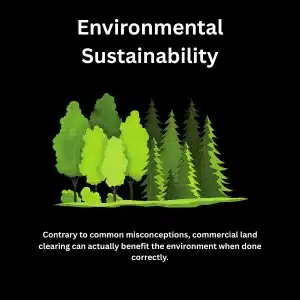
Contrary to common misconceptions, commercial land clearing can actually benefit the environment when done correctly. Removing trees creates opportunities for replanting vegetation that supports ecosystems on the land property.
Modern land clearing techniques minimize disruption to surrounding areas and can improve local air quality by removing sources of allergens or decay. Professionals understand how to balance needs with environmental responsibility.
Improved Site Safety
Professional land clearing eliminates hazards that could lead to accidents during construction, including unstable trees, hidden stumps, and dangerous debris. a safe environment for workers is made by removing these obstacles before building begins.
The equipment needed in skilled hands ensures thorough removal of potential dangers at ground level and below. This comprehensive approach prevents future issues that might arise from partially cleared vegetation or hidden debris.
Effective Pest Management
Overgrown greenery provides ideal habitats for rodents, insects, and other pests that can plague commercial properties. Clearing land professionally eliminates these habitats, significantly reducing infestation risks before construction begins.
By removing breeding grounds and food sources, land clearing services help prevent pest problems that could otherwise damage new structures or create health concerns. This proactive approach proves far more effective than addressing infestations after development.
Simplified Long-Term Site Maintenance
Clearing land properly dramatically reduces ongoing maintenance requirements for commercial properties. With stumps completely removed and problematic greenery eliminated, future landscape management becomes significantly more straightforward.
Professional land clearing creates an optimal foundation for planned landscaping, enhancing the property's curb appeal and functionality. This attention to detail translates to lower maintenance costs throughout the life of your construction or development.
Choosing the Right Equipment for Commercial Land Clearing

Professional land clearing services require advanced equipment specifically designed for the task at hand. From bulldozers and excavators to stump grinders and mulchers, each machine serves a specific purpose in the clearing process.
Heavy machinery operated by skilled professionals ensures efficient completion of even the most complex projects. The right equipment can make the difference between a properly prepared site and one with lingering issues that complicate construction.
Why Professional Excavation Services Matter
Professional excavation companies bring invaluable expertise to commercial land clearing projects. Their knowledge of regulatory compliance, safety protocols, and environmental considerations ensures your project proceeds smoothly from the outset.
An experienced team understands how to coordinate land clearing with other projects in your development timeline. This orchestration prevents bottlenecks and ensures efficient resource utilization throughout the construction process.
By partnering with commercial land clearing services familiar with Central Texas conditions, you gain access to local knowledge that proves invaluable during the development process. From understanding seasonal considerations to navigating local building regulations, this expertise translates to tangible project benefits.
Selecting a Trusted Partner for Your Commercial Land Clearing Needs
When evaluating commercial land clearing services, look for companies with demonstrated experience in Central Texas projects similar to yours. Their portfolio should showcase clearing land successfully and professionally.
A trusted partner will offer transparent communication throughout the process, clearly explaining the right method for your specific situation. They should provide comprehensive services from initial assessment through final site preparation.
The ideal land clearing service combines technical expertise with a commitment to customer service, ensuring your future project's unique needs receive proper attention. Their professionals should guide you through all aspects of the land clearing service, from required permits to final inspections.
Conclusion
Professional land clearing services create the foundation upon which successful commercial projects in Central Texas are built. By addressing specific needs properly from a clean slate, developers avoid delays and create optimal conditions for construction.
The investment in proper land clearing services delivers returns throughout your project's lifecycle. From improved soil conditions and enhanced safety to simplified maintenance and environmental impacts, professional land clearing establishes the conditions for success.
When you're ready to transform your commercial land into a building-ready site, partnering with experienced professionals ensures the job is done right. Their specialized equipment, technical knowledge, and understanding of local conditions will help clear away obstacles and create a clear path to your current and future project's success.
As you start preparing land to break ground on your development, consider Shilling Excavation—a reputable Central Texas commercial land clearing service with a proven track record of excellence. Contact our experienced team today to discuss your specific needs and discover how our professional site preparation expertise can benefit your next development project.






















